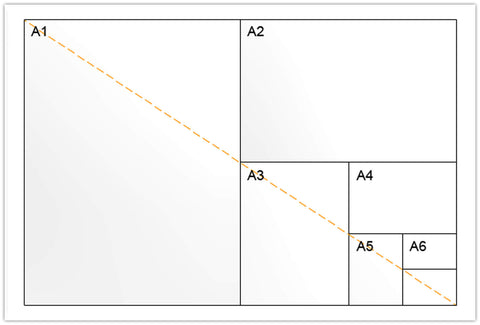What are DIN formats?
Get to know the DIN formats
In the world of printing and graphic design, DIN formats are an essential part that we must thoroughly understand. These standards, developed by the German Institute for Standardization (Deutsches Institut für Normung, in German), are widely used in Europe and other parts of the world. In this article, we will explore in detail what DIN formats are, why they are important, and how they can influence printing and design.
What does DIN mean?
DIN is the abbreviation for "Deutsches Institut für Normung", which translates to "German Institute for Standardization". This institute was founded in Germany in 1917 and is dedicated to standardizing a wide variety of products and processes. DIN standards are internationally recognized for their precision and quality, making them fundamental references in various industries.
The history of DIN formats
The history of DIN formats dates back to the 20th century, when Germany sought to establish consistent paper standards and page sizes. In 1922, the DIN 476 standard was introduced, which defined paper sizes according to a series of mathematical proportions. This standard gave rise to what we now know as the DIN A series formats, which include sizes such as A4, A5, and A6, among others.

The importance of DIN formats in printing
DIN formats are crucial in the world of printing. For example, the A4 format, which measures 210 x 297 millimeters, is the standard used in most printed documents, such as letters, reports, and brochures. Thanks to the uniformity of DIN formats, printers and copiers can handle documents from different sources efficiently, without the need for constant adjustments.
DIN formats and graphic design
In graphic design, knowledge of DIN formats is essential to create effective and professional visual pieces. Designers use these standards to determine the size of posters, flyers, and business cards, among others. By following the guidelines of DIN formats, it is ensured that printed pieces are visually harmonious and easy to read.
Advantages of using DIN formats
Using DIN formats offers several advantages in both printing and graphic design:
1. Consistency
DIN formats provide a solid foundation for consistency in the presentation of documents and printed materials. This is especially important in business environments where a professional and coherent image is sought.
2. Efficiency
DIN formats allow efficient use of paper and other resources, as they are designed to minimize waste. This is beneficial from both an environmental and economic perspective.
3. International compatibility
Since DIN standards are widely recognized worldwide, using these formats facilitates international communication and collaboration. Documents designed following these standards are easily understood by people from different countries.
4. Ease of printing
Most printers and office equipment are configured to work with standard DIN formats, which facilitates hassle-free printing.
Conclusions
In summary, DIN formats are a fundamental part of the world of printing and graphic design. These standards, developed by the German Institute for Standardization, provide consistency, efficiency, and international compatibility in the creation of documents and printed materials.
By understanding and properly using DIN formats, we can ensure that our visual communications are effective and professional.

















